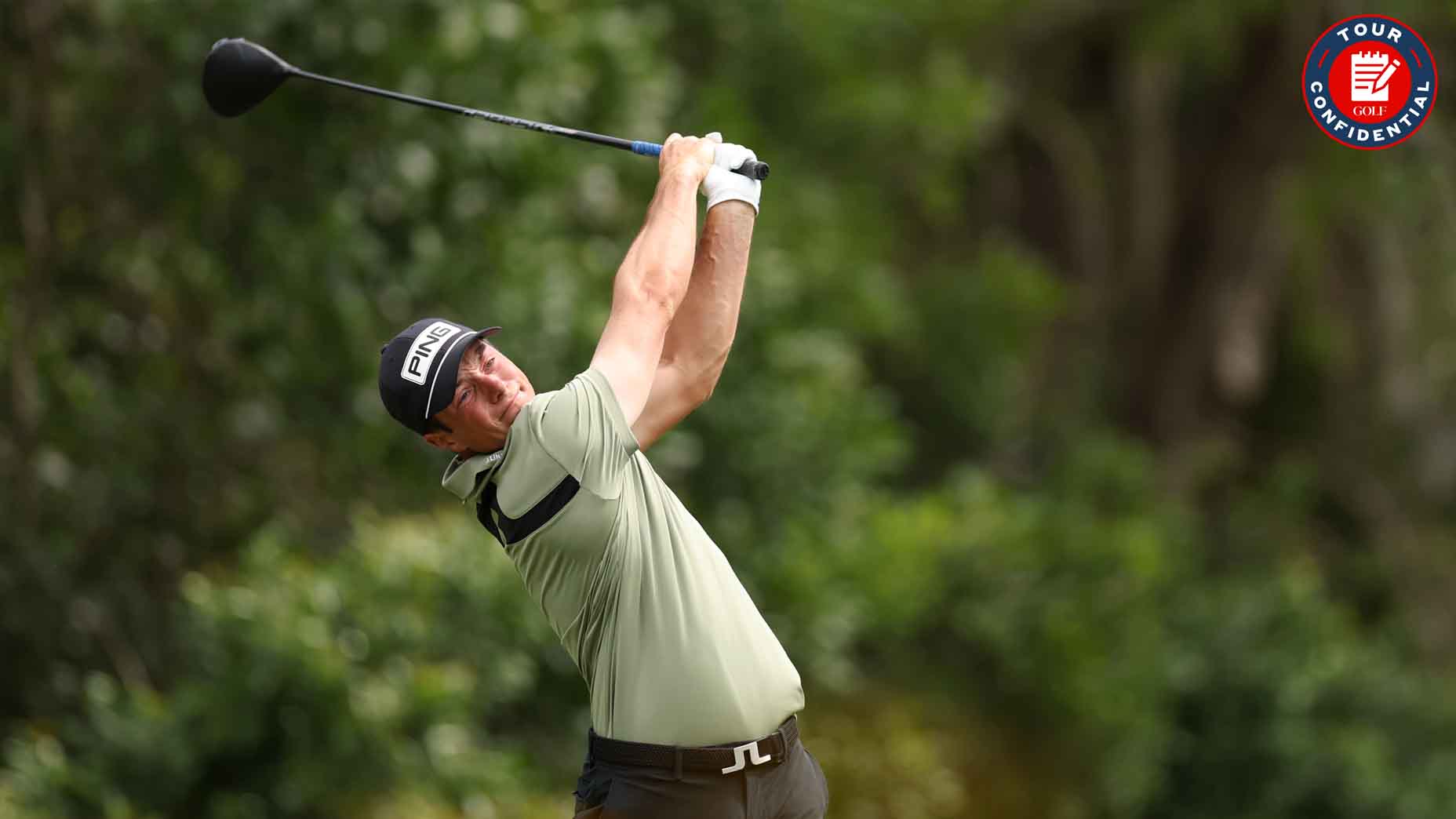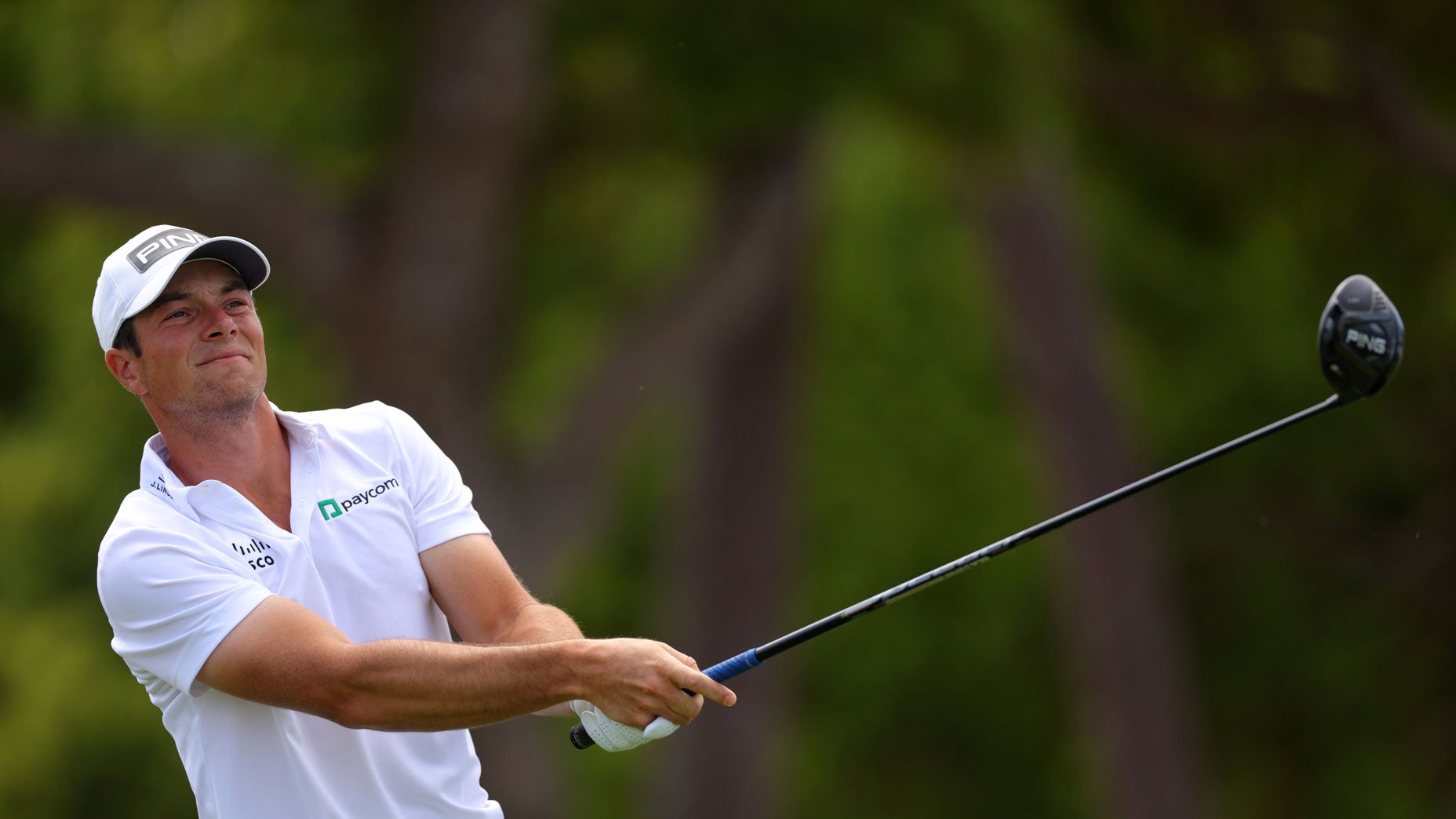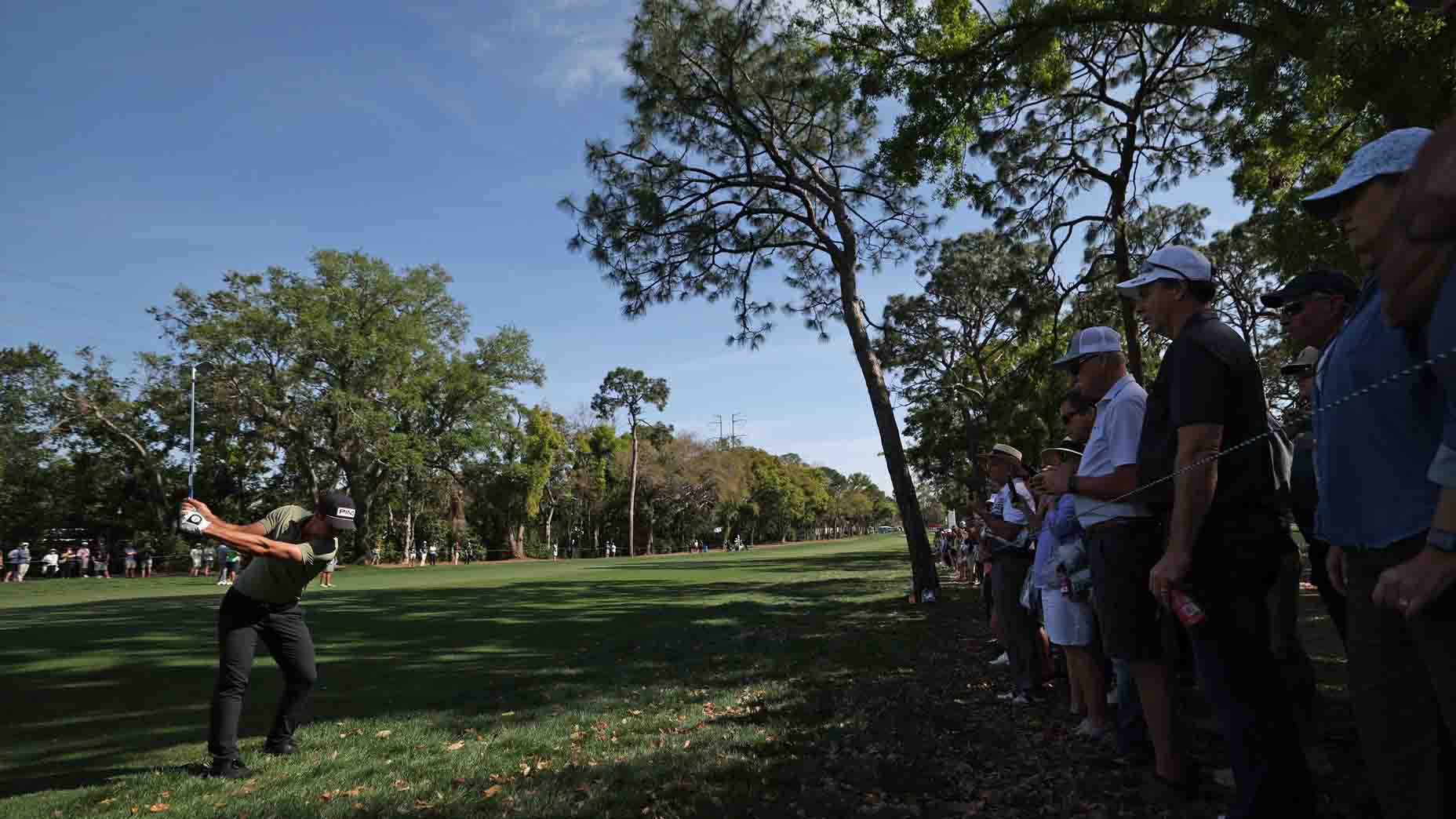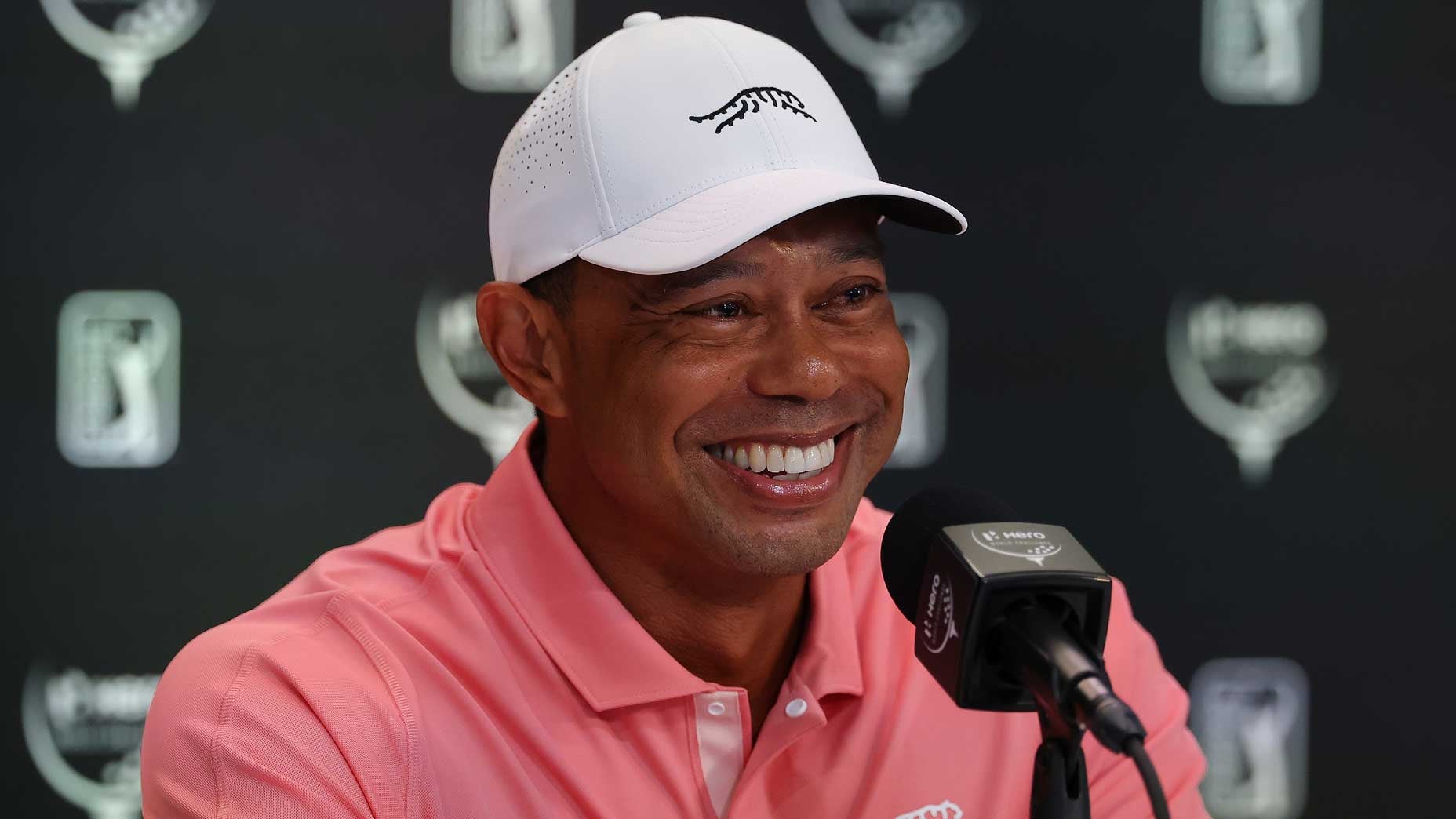 Tiger Woods confirms relationship with Vanessa Trump, ex-wife of Donald Trump Jr.
Tiger Woods confirms relationship with Vanessa Trump, ex-wife of Donald Trump Jr.
The best athlete in Brooks Koepka’s family might not be Brooks Koepka

FARMINGDALE, N.Y. — The golfers, these days more than ever, like to think of themselves as ballplayers, but of course some of them have more player in them than others. And then there’s the king of the hill, Brooks Koepka, who plays golf with Mickey Mantle’s body and handles interviews with DiMaggio-like economy. He’s a ballplayer’s ballplayer.
When Koepka spits on the course, it’s purposeful. That is, it has big-league style. When he tosses his iron on his bag while his caddie chases after a divot, it brings to mind Barry Bonds dropping his bat after yet another walk. More than a few golfers this week have called Bethpage Black a “big ballyard.” But it looks like a bandbox — smaller than Fenway — the way Koepka’s going around it. It doesn’t seem fair. He has a seven-run lead through not-quite five innings of play.
Koepka went 63-65 over the first two rounds in the presence of Tiger Woods who, like Koepka, is the son of a college baseball player. Earl Woods was a catcher at Kansas State. Bob Koepka was a pitcher at West Virginia Wesleyan. Woods will often make references to other sports when trying to explain golf. This week, when he was asked about Koepka, he ran to the pastime.
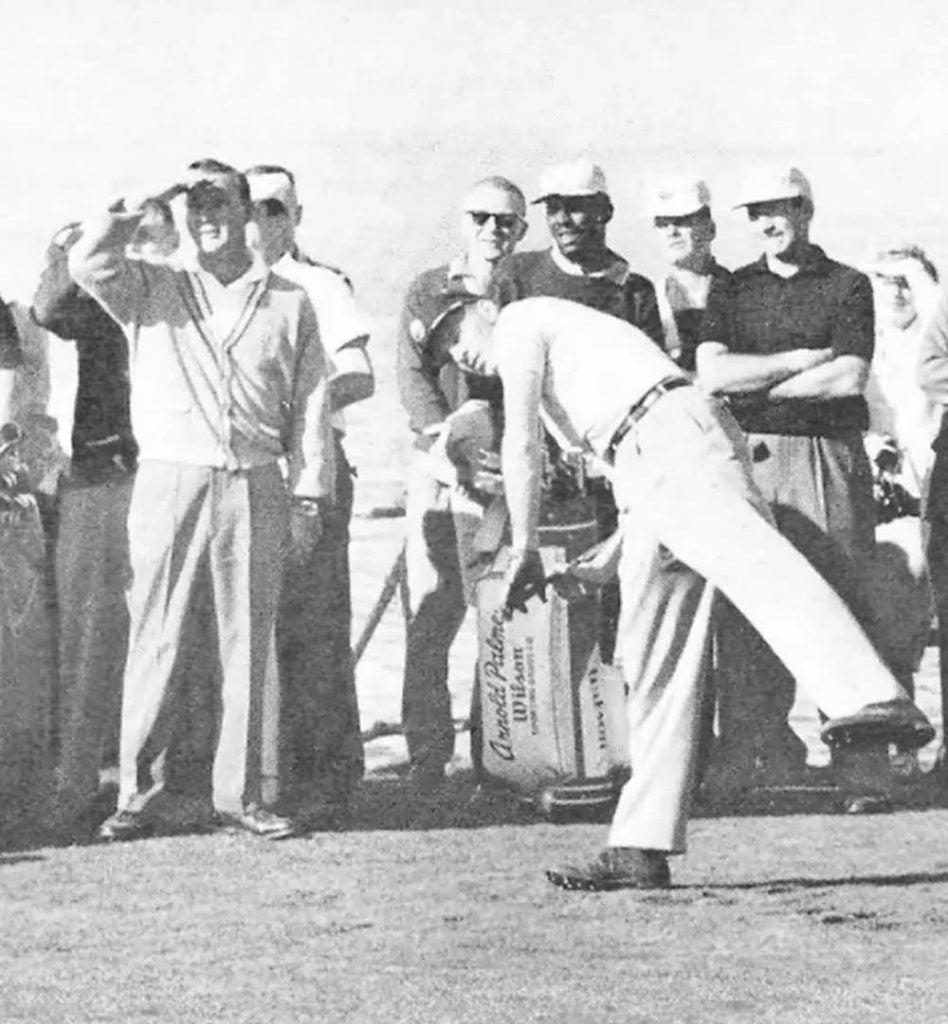
“Does Brooksie look like a young me? No, I wish,” Woods said, responding to a question in a pre-tournament press conference. “I was never that big. I was 130 pounds. But we were both able to generate speed. I didn’t have muscle. I did it through whip and timing. Brooksie’s just got pure power, and he’s an athlete. He played other sports, and he could have easily been a baseball player. Players like that who come to golf generally hit the ball far because a baseball bat is so much heavier than a golf club. If you’re able to generate bat speed, you can definitely generate clubhead speed in golf.”
Many people would likely agree with that — the Hall of Fame slugger Jim Rice could drive a golf ball 350 yards with a wooden driver and a balata ball —and one person who definitely agrees with it is an 88-year-old Pittsburgh sports legend named Dick Groat. Groat played in 1,929 major-league baseball games in the 1950s and ‘60s, most of them as a shortstop for the Pittsburgh Pirates, and had a .286 career average. Before that, he played college baseball and basketball for Duke.
When he was near the end of his baseball career, he and some of his baseball buddies built a golf course that Groat still owns today. One person who once played that course regularly, and tended its bar occasionally, was Brooks Koepka’s father, Bob. Bob Koepka’s uncle is Dick Groat. Dick’s sister, Mary Margaret Groat, married a Pennsylvania man named Burwell Koepka. They had a son named Bob. Bob married a Johnstown, Pa., TV news anchor name Denise Jakows. Bob and Denise have two sons, Brooks and Chase.
ADVERTISEMENT
“I never thought of it quite that way,” Groat said by phone Friday afternoon, when he heard Tiger’s baseball analogy, “but it makes sense. I was never a home run hitter. But if you’re trying to hit Bob Gibson or Sandy Koufax and their 100 mile-an-hour fastballs, you better have some bat speed.” He had only 39 career home runs, but did manage to go yard on Koufax once and Gibson once.
Groat could shoot in the 70s in his prime. He’s a modest man by nature, but asked what he was like with a driver in hand, he said, “I could move it but I kept it in play.”
You know what they say: like great-uncle, like great-nephew.
The course Groat owns, run by his daughter, Allison, is called Champion Lakes, in the western Pennsylvania town of Bolivar. It’s about a half-hour drive from the course Arnold Palmer owned, the Latrobe Country Club. In 1960, Palmer was Sports Illustrated’s Sportsman of the Year, the year he won the U.S. Open. Groat was the 1960 National League MVP, in the year the Pirates won the World Series. The two Pennsylvanians did a lot of dinners together that winter and in 1961 played in the Pebble Beach Pro-Am together. “Arnold was one of the most competitive people I have ever met,” Groat said. When Groat told Palmer he was going to build a golf course with a teammate, Arnold said, “Are you crazy? Two ballplayers building a golf course?” But he subsequently played the course and enjoyed it and helped spread the word about it, Groat said.
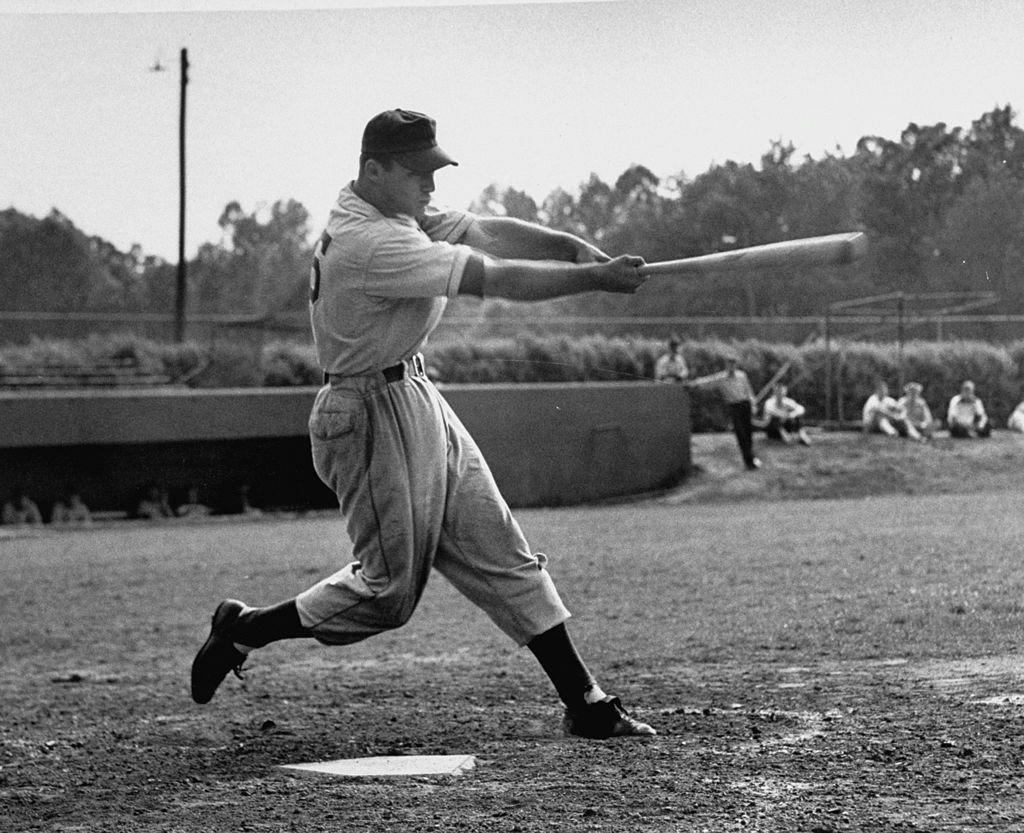
Brooks’s brother, Chase, who is also a professional golfer, has played often at Champion Lakes, but Groat can remember Brooks playing their only once. Groat played the course often with Bob Koepka, the father of the two young pros.
For 40 years, until this year, Groat did play-by-play radio work, covering Pitt basketball. A few years ago, he was working a Pitt-Florida State game, in Tallahassee, and he and Brooks had a halftime visit. “He’s a well-built, well-grounded kid who doesn’t say much,’ Groat said. Sounds like a very accurate scouting report. “I root for him like crazy.”
Koepka said he heard a lot about his father’s uncle, as he was growing up. “Our family are big baseball fans, and my boys back home, all they do is talk baseball. When I was growing up, we heard about him. Getting his number retired at Duke and being able to win two World Series is pretty impressive. He was some athlete.”
He absolutely was, as is Dick Groat’s great nephew.
Michael Bamberger may be reached atMichael_Bamberger@golf.com.
ADVERTISEMENT



